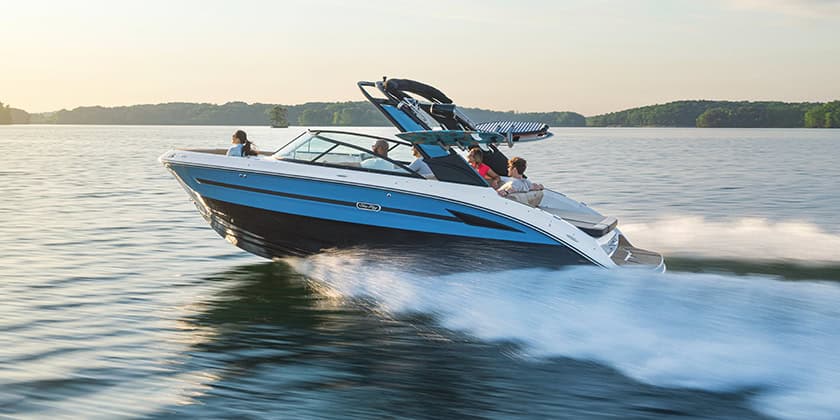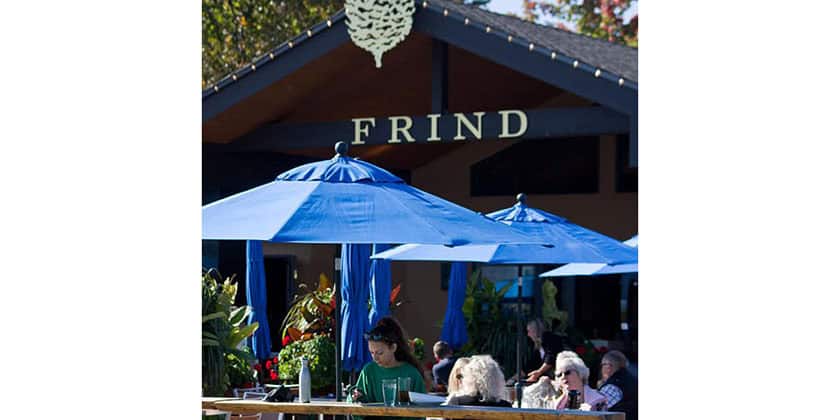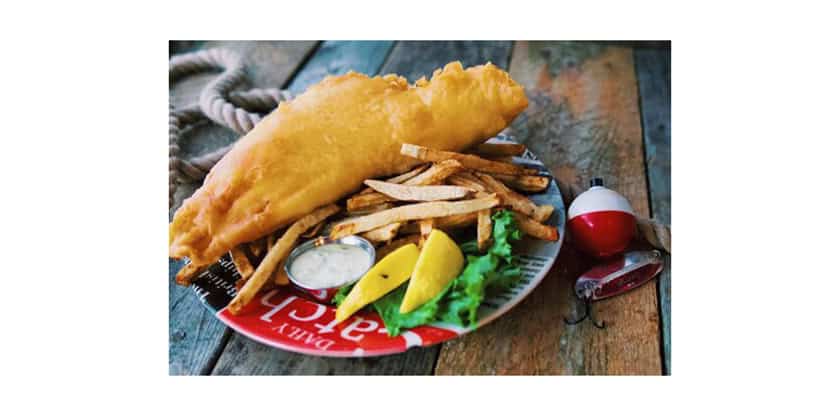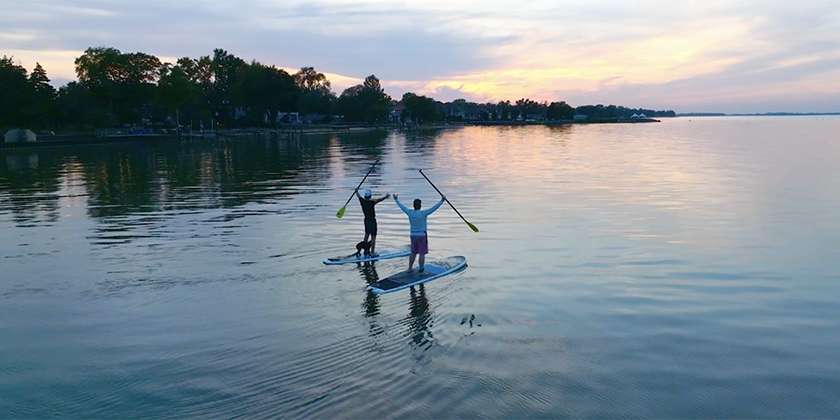Contour 30
 By Lloyd Hircock
By Lloyd Hircock
A few years ago, Paul Countouris solved the age-old problem of space. Specifically, space at the marina. His Dragonfly 25, with its folding amas or outriggers (see CY, Killing On Design, Jan/Feb 1991), resolved one of the major problems of multihull owners at overcrowded marinas. Following the Dragonfly’s success (60 are now sailing North American waters), the designer, mould maker and yacht builder recently unveiled his newest speedster, the Contour 30. Countouris is manufacturing under the P.C. Mould Ltd. logo in an impressive 10,000-sq-ft facility in Erin, Ont. Now trading on his success with the Dragonfly 25, Countouris is building the Cole Beadon-designed Contour 30 for sailing enthusiasts who demand the same thrill of speed, coupled with a greater array of creature comforts below deck.
One of those speed enthusiasts is Toronto psychiatrist Mikhail Epelbaum. “I wanted standing headroom and a full head with shower on my next boat,” said the former Dragonfly owner while we tacked his Contour 30 (hull #1) out the Eastern Gap into a mist-shrouded (summer of 1992) Lake Ontario. “Also,” he added, “the yacht had to be slip-friendly, (folding amas) because life on a mooring is not always as sedate as it appears.”
The Contour 30, suggests Epelbaum, is indeed just what the doctor ordered. “I single-hand a lot and one criterion was the design had to be suitable for sailing alone, because my wife has a habit of wanting to serve lunch while I’m trying to tack up a congested channel!”
Not only is the design easy to handle on all points of sail, I was pleasantly surprised how effortlessly it tacked, even in very light conditions.
I recalled past sails on both tris and cats when tacking under light conditions was a chore and if the entire procedure wasn’t timed precisely (“Back the damn jib,” one nervous skipper barked, as I remember), the vessel would simply round-up into irons – and there you’d sit, parked.
But there was no backing of the jib during our teat-sail onboard Caniculi, (Russian for dog days or vacation). In fact, the yacht answered the helm smartly, regardless of the manoeuvre.
The yacht uses balsa core-sandwich construction throughout and foam between layers of unidirectional glass saturated with isoptholic resins. Now on hull #8, [as of 1991] production facilities are capable of pumping out one every 380 hours, or more precisely, to be carted away on a trailer, amas folded (8 ft. 6 in.), down the asphalt canals heading for a new sailing adventure.
The centrehull underwater sections are elliptical and the hull’s waterline length is 8.3 times its beam. And the ama displacement is a whopping 180 per cent. In other words, the ama will support 1.8 times the weight of the boat or, pounding through seas, it’s unlikely you can bury the leeward ama, which adds an extra safety factor unique to modern multihulls.
A new rotating mast section designed by Rob Mazza, formerly of Ellis Design Associates in Oakville, Ont., and now with Hunter Marine in Florida, replaces an older design that proved inadequate during field testing. The well-stayed rig fabricated by Klacko in Oakville, Ont. features double spreaders, diamonds and running backs.
A stainless steel kicker is fixed below the gooseneck at the mast base to stop the rig from over-rotating in heavy air.
The show stopper and piece de resistance is the folding amas. Now there’s nothing really magical here, folks, just sound engineering principles coupled with a relatively simple design.
A retrieving line cleated at the cockpit when hauled in forces and aft crossbeams to pivot in unison about one-inch stainless steel pin centres, enclosed by massive Teflon bearings, positioned at the crossbeam/mainhull joint.
So, why doesn’t the vessel tip over when the ama is fully furled? The secret is simple, ye readers of little faith. As the ama is pulled back toward the mainhull, it is being pulled down into the water at an angle of seven degrees as well. The mainhull is lifted and the amas now provide that stability. Indeed, even with both amas secured to the hull, the vessel is safe to sail in most conditions, besides resting safely at a slip.
When the owner decides to set sail, a second line, accessible from the cockpit, is hauled in releasing the amas from their down position. Once fully extended and locked, you’re ready for fun.
Below decks this nifty 30-footer is spartan but practically appointed. The economical galley, to starboard of the companionway, is complete with a sink, icebox, dry storage locker and fitted stove. When asked if he had ever made a meal underway, Epelbaum’s reply was “certainly, the galley is quite accommodating and well thought out.”
Up forward a spacious V-berth is reached by a starboard passageway. The six-foot two-inch headroom in the main saloon is rapidly reduced as one ventures forward. Then once in the V-berth, only three feet of the sitting headroom is offered. But as V-berths go, it’s roomy.
Although the yacht designer has opted for midcabin port and starboard berths, Epelbaum suggested he and his wife prefer using a centre section, placed between the midcabin bunks, to form a large cosy double bunk. “It’s great until our dog (who sleeps in the V-berth forward) wants to go outside in the middle of the night and walks all over us. “Of course, I have a simple solution to that problem: leave the forward hatch open and let Rover climb out onto the deck.
Caniculi was suitably canvassed with a fully battened mainsail, a #2 and #3 by Raudaschl. The foresail was bent onto a headsail furler located in the anchor locker. Hiding the furling drum belowdecks enhances the aesthetics of the cambered deck, producing a pleasingly uncluttered look.
During our test sail, the usual fickle late afternoon winds of a dog day in July greeted us. The running shot of Caniculi here indicates a vessel planted in the water — not moving. Nothing is further from the truth. In fact, we were cruising a tad shy of 5.5 knots at the time of the photo.
When we finally tacked clear of the outer headland, the breeze picked up and so did Caniculi. It is most exhilarating to experience a 30-foot vessel, displacing 2,700 lbs and carrying a fully submerged daggerboard (5 ft. 9 in.) catapult out of a comatose state and accelerate almost instantly from four knots to seven knots plus in less than eight knots of breeze!
For those not accustomed to the joys of sailing fast on an even keel, the Contour 30 is impressive. While it is not my intention here, nor would it be fair to compare other yachts I have sailed to the Contour 30, I’ll paraphrase a cartoon I saw many years ago that portrayed a monohull sailor kneeling in prayer beside his bed with a duffel bag at his side. The caption read, “Oh Lord, forgive me, I went sailing on a trimaran – and loved it!” (I’m certain you get the idea.)
And for the cruising gunkholer, the design of the Contour 30 offers another advantage unavailable to most monos and multihulls of the same size-the ability to beach.
The design is equipped with a kick-up rudder. With a draught less than 18 inches, shallow cruising areas, usually inaccessible to but a few designs, are now within the owner’s grasp. Then if the mood strikes, beach the vessel for a leisurely lunch or stay the night.
Next from P.C. Mould, says the affable builder, “is a toy for me.” A Custom Contour 30, built extremely lightweight. “I’m going to experiment and see what I can build for those maniac speed sailors.” As well, Countouris is planning to build the plug and maybe a few boats called an Electra Sport. This 20-foot doublehand racer is being built for Heider Funck of Raudaschl Sails in Toronto.
So, if I’ve whet your appetite for more on the Contour 30, a test drive can be arranged on this sporty model by contacting the dealer network. And if you are already sold, a cheque or cash for $115,000 [as of 1996] will bring you a boat ready to sail.
Originally published in Canadian Yachting’s October 1992 issue.
Specifications
LOA 30 ft.
Beam 22 ft.
Folded 11 ft.
Trailered 8 ft.
Draft (board up) 1 ft.
Draft (board down) 5 ft.
Sail Area (100%) 510 sq. ft.
Weight 2,700 lbs.






















